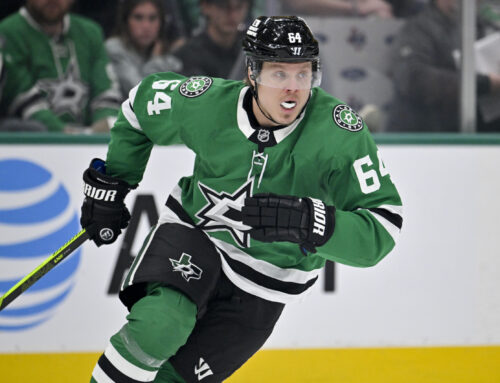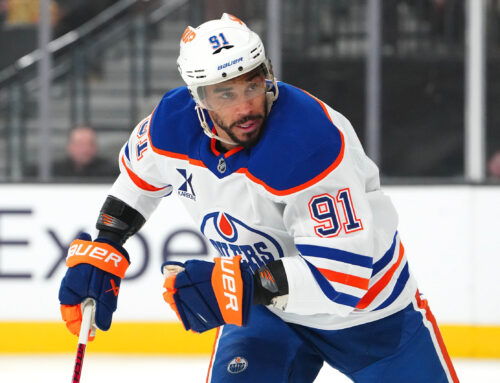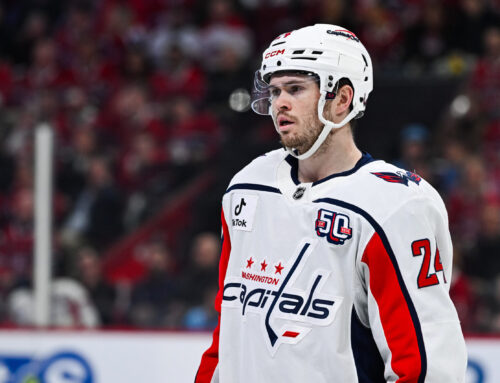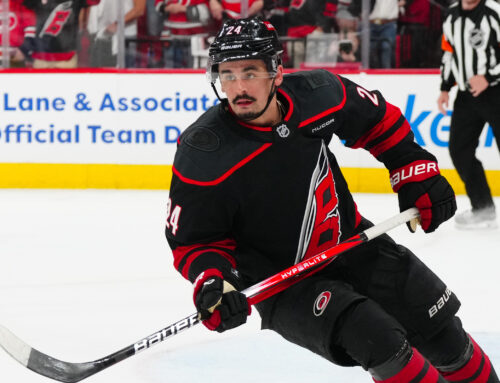
I’ve hinted around at this for the past few weeks, but there are a lot of players in keeper pools whose values are overlooked simply because of their age.
When many fantasy general managers have given up on a season and are looking to next year, they have a tendency to focus on youth for their quick rebuild. I believe you can have a lot of success, especially in points-only pools, by going the opposite route and targeting older players having a tough season.
Don’t believe me? Just scan this year’s top 30 point producers. Going into yesterday’s action, 16 of them are 27 years old or over.
A year ago, Johnny Gaudreau had 61 points while Claude Giroux had 58 points. Both were massive disappointments, but It would have cost you a fortune to trade for Gaudreau while Giroux would have been the much cheaper option. That’s exactly what I did a year ago. I like trying to get older players in the midst of disappointing seasons that are still getting lots of ice time, top power play time, or in the case of netminders, the clear-cut number one goalie.
When injuries took me out of my points-only pool (17 keepers) last year, I traded for guys like Claude Giroux, Anze Kopitar and Jonathan Quick. It’s paid off, as I am up by about 62 points and on my way to my third championship in the last six seasons.
Here are 10 players, who are at least 27 years old and having disappointing seasons, that I would be targeting in points-only leagues:
10. Ryan Kesler
Kesler’s 0.27 points-per-game (before last night’s game) is a whole new level of awful, especially considering he averaged 0.65 points-per-game in his three previous seasons with the Ducks. Peripheral wise, he’s still a must-own in many leagues (averaging 1.14 PIM, 1.7 shots, 1.6 hits and nine faceoff wins in his 37 games since returning from hip surgery). I’m marking this as a lost season and expect him to be back to a 50-point pace next year.
9. Corey Perry
I don’t believe Perry will get back to his 98-point days, but I believe he has a good shot at getting to at least 60 points next year. On pace for 48 points (going into last night’s game), this was one of those seasons where pretty much everything could go wrong. The Ducks have been decimated with injuries (including some games for Perry due to a knee injury). The key for Perry is the power play. He is on pace for 11 man-advantage points, below the 20 and 24 he hit in each of the previous two seasons. He’s not being used at even strength as much as he used to, but he’s still a fixture on the top power play unit. An extra 10 points on the power play, and he’s flirting with 60 points again.
This has been pretty much a lost season for Johansson, thanks to numerous concussions. His 0.48 points per game average is his lowest since his 2010-11 rookie season. He doesn’t get the high amount of ice time that the others on this list command on a nightly basis, but it would be tough to see Johansson not going back to his normal points-per-game pace and get back to that 20-goal, 50-point player next year.
7. Kyle Okposo
Okposo has been the same since he left New York, but you can chalk a lot of it up to injuries. He’s missed at least 10 games in four of the last five years. Last year’s injury was especially alarming when he had a reaction to concussion medication. He had 45 points last year and is on pace for 43 this year. Of course, fantasy GMs are scared off. That’s why you should be able to get him extremely cheap and hope for a rebound year. His ice time is down two minutes a game, but he’s still a fixture on the top power play unit.
Varlamov’s value continues to decline thanks to poor play and injuries. In my keeper pool I mentioned earlier, Varlamov was dealt minutes before our trade deadline for a fourth-round pick. Varlamov’s numbers on the year don’t look great: 23-15-6 record with 27 quality starts, a 2.73 GAA and a .919 SV %. This is what makes him the perfect bounce back candidate. If you believe Colorado will continue to improve next year, you need to target Varlamov. His big-money contract expires next summer, and he’s going to be extra motivated to prove he’s worth another big-money contract.
There could still be a good chance to buy low on Pacioretty, but you have to be quick. If you’re looking to buy low, what makes more sense? Trading for Pacioretty before Montreal potentially gets a number one centre, or after? Pacioretty is still the top option in Montreal, gets tons of power play time, is frequently a top shot producer and will be until he is eventually traded for someone like Brandon Davidson.
4. Cam Atkinson
Atkinson is definitely a late bloomer, and I was surprised to find out he’ll be turning 29 this June. This season has definitely been a disappointment for Atkinson owners. He had a disappointing start (13 points in 32 games), and then a fractured foot caused him to miss a month. He’s been rebounding lately, with 17 points in his last 15 games. He’s still shooting the puck a plenty and is on Columbus’ top power play unity. Expect him to get back to 60 points next year.
It wasn’t long ago that Schneider was considered a tier 1 goalie, but he hasn’t been that good for a couple of years. In the last two years he’s started 99 games and has a 37-42-17 record with a .909 SV %, a 2.84 GAA and only three shutouts. This year, he’s lost the starter’s job to Keith Kinkaid, but Schneider is the golden boy in New Jersey and has a contract big enough to keep guaranteeing him the starts.
2. Joe Pavelski
Pavelski is on pace for 66 points, which is pretty bang on to last year’s 68 points. Those are still disappointing numbers. He was playing hurt for part of the first half, and it showed with eight points in his first 19 games. The 33-year-old is still getting top line minutes and top power play time. Pavelski is already bouncing back in a big way with 52 points in his last 56 games (a 76-point pace), including 24 in his last 22.
Backstrom had years of declining numbers before rebounding in 2016-17 to 86 points. That resurgence didn’t last as he is now on pace for 67 points. Ouch. Like many on this list, he’s on his team’s top power play unit and hasn’t seen a decrease in overall ice time. His biggest decline has been in power play numbers. After averaging 35 power play points the previous four years, Backstrom is on pace for 25 this year. A normal power play year would have him around the 80-point mark.
One Comment
Leave A Comment
You must be logged in to post a comment.





 FLA
FLA EDM
EDM MIN
MIN DAL
DAL UTA
UTA VAN
VAN STL
STL L.A
L.A TOR
TOR ARI
ARI

This IS Varlamov’s bounce back year, the last 2 were far worse, and it may end up being his second best season ever.